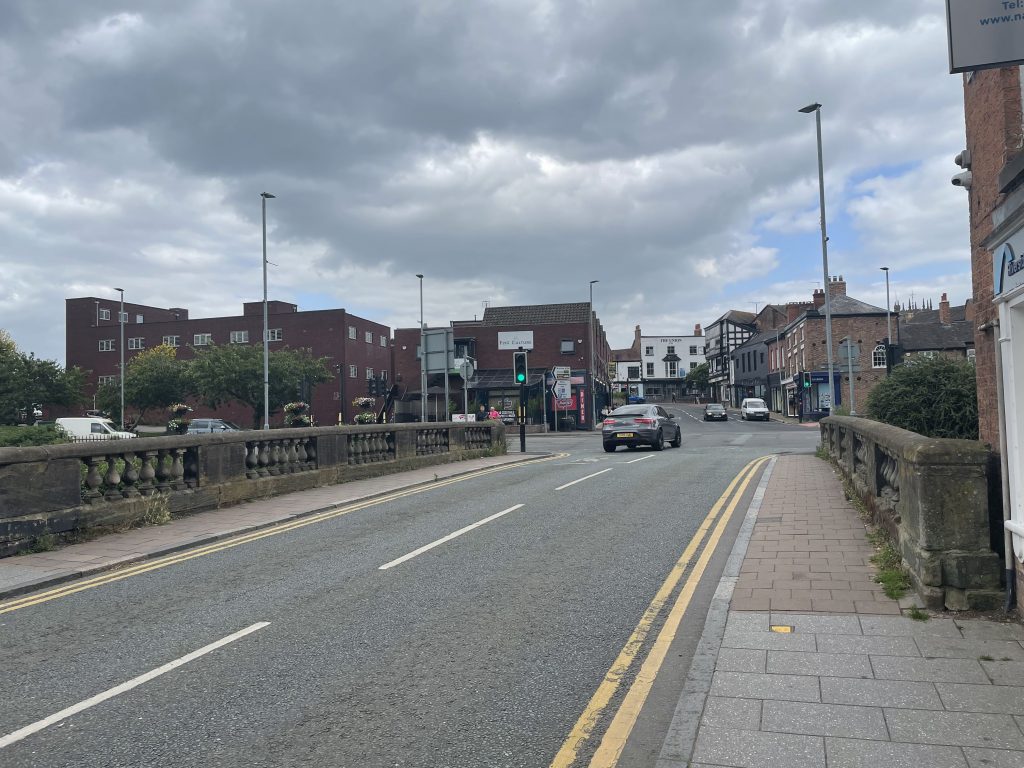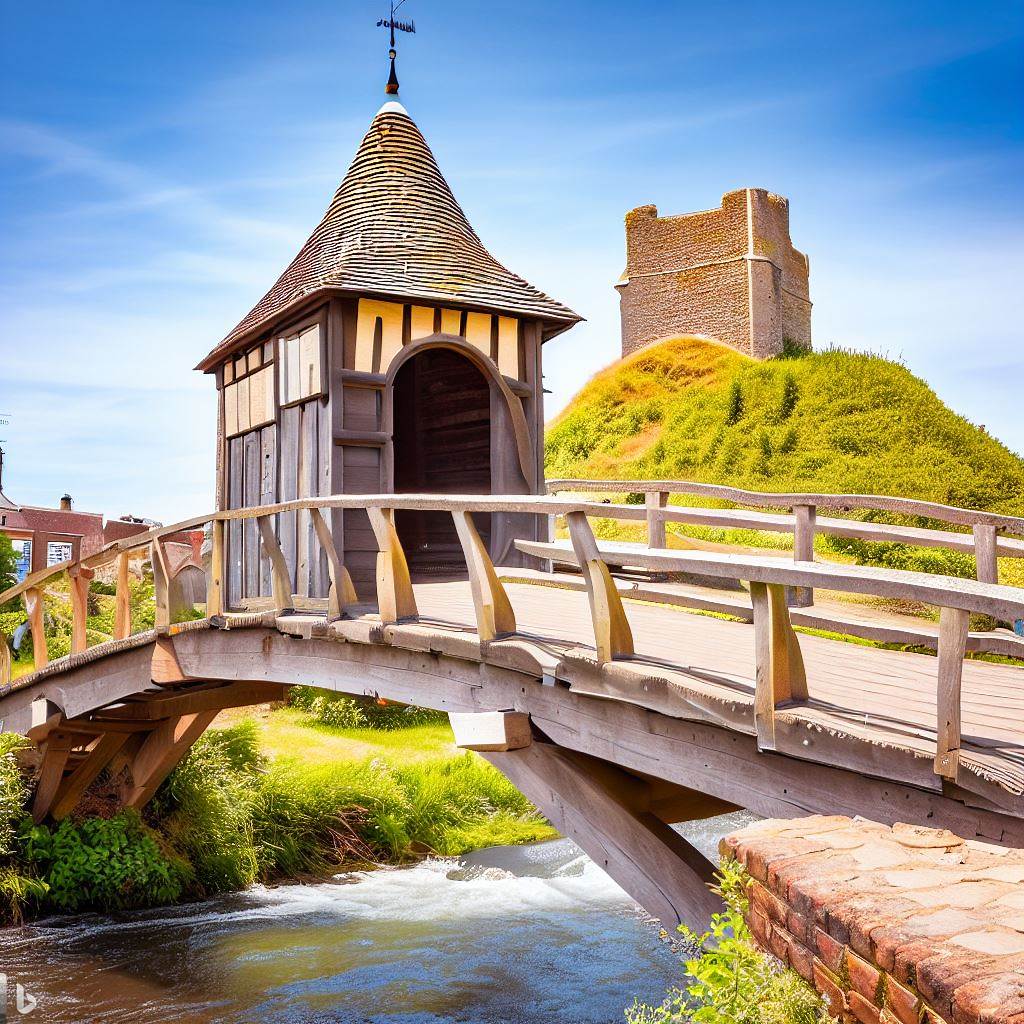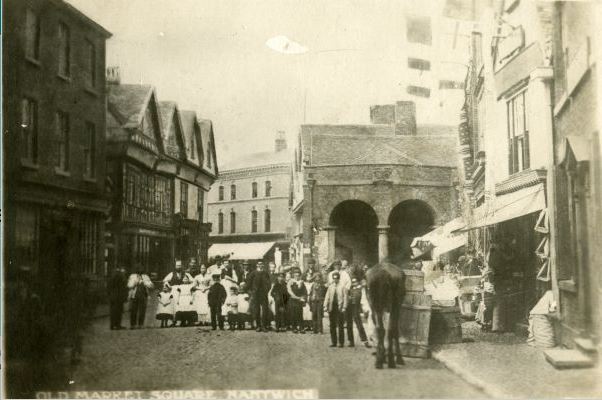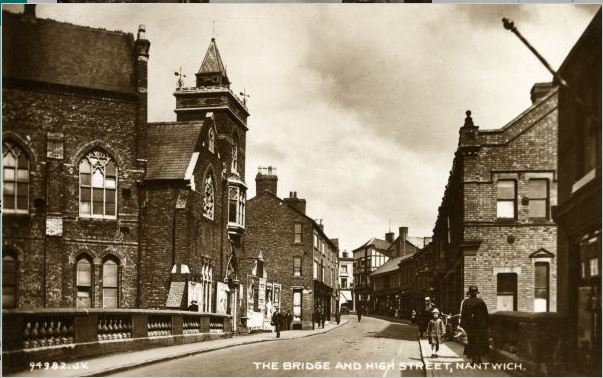Part 1: Fording the river
This part of Nantwich has been strategically important for millenia both for the nearby salt bearing brine springs and as a crossroads on the wider transport networks, both regional and national.
There has been a river crossing in this area of Nantwich since at least the time of the Romans when the roman road forded the Weaver to the South of the modern day bridge and North of where Mill Island lies today. At that time the river would have meandered through Nantwich without the man-made diversion known as a ‘mill race’ which was built for Nantwich Mill many years later.
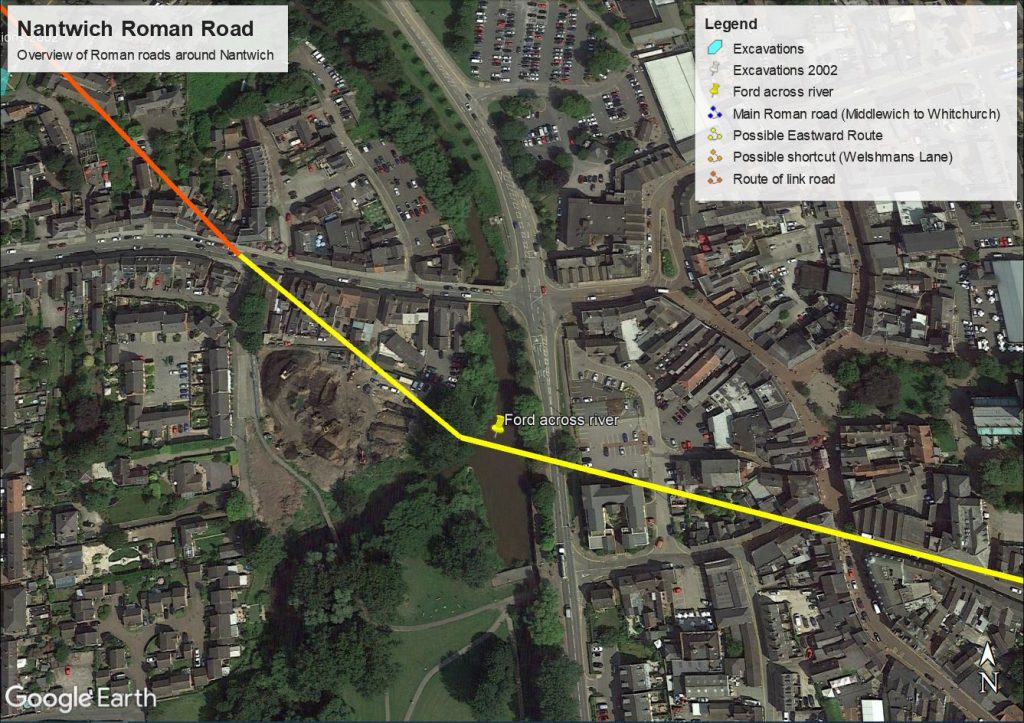
You can read more about the Roman Road here.
Following the Norman invasion of 1066, a motte and bailey castle was built on the East bank of the river, close to the ford crossing in the area which is now a car park called Bower’s Row. A fortified position here would have been perfect for controlling the traffic which flowed along the route of the old Roman road.
Part 2: Say your prayers
Some time over the next few centuries the ford crossing was eventually replaced with a wooden bridge a little further to the North where the modern day stone bridge is located. Early records present a surprising description. James Hall, a local historian wrote about the bridge in his 1883 book ‘A history of the town and parish of Nantwich’:
Under date 5th Jan. 1398 [-9] occurs the first mention of the Town Bridge, when
licence was granted by the Bishop of Lichfield and Coventry, for the benefit of the inhabitants of the town of Nantwich, to have divine service celebrated in “St. Ann’s Chapel upon the Bridge in the said town”
‘A history of the town and parish of Nantwich‘ by James Hall 1883 (Page 86)
And also,
It occurs again in John de Kyngeslegh’s Rental dated 17 Hen. VI. [1438-9], as follows: –
” Four shops which he formerly had upon the Bridge with the Chapel etc. value 40 sh.”
‘A history of the town and parish of Nantwich‘ by James Hall 1883 (Page 86)
So we have records from the late medieval period describing a bridge at Nantwich which had a chapel and four shops on it.
Bridges with chapels and other buildings on them were relatively common at the time although few survive today. A famous example is the old London Bridge which at its peak in the late fourteenth century had 140 houses on it with shops on the bottom floor creating one of the busiest shopping streets in the city. There was a chapel at the centre which was dedicated to the martyr Thomas Beckett.

Our bridge in Nantwich was obviously on a much smaller scale than London Bridge but other similar examples existed nearby in both Congleton and Stockport. It is not known whether the chapel and shops were in the centre of the bridge or if they were at either end but it was not uncommon for the buildings to be integral to the structure itself.
The chapel would have been a place where a priest would say masses and prayers for those using the bridge in return for an offering or toll which would have been an important source of income in addition to rent from the shops to pay for the upkeep of the bridge.
In the 1540s, the reformation brought an end to these practices and the chapel was probably removed around this time.
Nantwich was on the main road from London to Chester and so the bridge was well used for both trade and the military on their way to Wales and later Ireland. A toll was payable for using the bridge which was put towards the cost of maintaining it although the military were exempt.
So far, the maintenance of the bridge was the responsibility of the townsfolk of Nantwich.
“A strong timber bridge over the stream of the Weever is maintained by the town, which requires no little care and cost, by reason of the monstrous carriages of the wood in carts which is brought thither for the boiling of their salt.”
Mr Webb’s description of the town in 1622 (taken from Hall 1883).
In 1635, Nantwich was ordered to improve and repair its bridge to enable easier passage for horse and carts and presumably for the increased traffic which was now using it; however the work was not immediately carried out and nature stepped in. Thomas Wilbraham, a prominent resident of Nantwich, recorded in his diary a year later:
5 Nov. 1636. The River Weever was so high yt the water touched the planks of the Wych bridge, & broke down the Jarrels, & did run with a swift current through my cos. Hassalls gates.
Thomas Wilbrahams Diary 1635 (taken from Hall 1883).
The next summer, the bridge was rebuilt in timber.
Hall tells us that in 1652 the bridge was reclassified as a ‘County Bridge’ owing to its importance beyond the town and relieving Nantwich residents of most of the maintenance costs and instead contributing to the upkeep of all county bridges. And so in 1663 the wooden bridge was replaced in stone for the first time.
Roger Wilbraham, the son of Thomas Wilbraham recorded in his diary:
Our Town Bridge which was of timber, being in decay, I obtained of the Justices of the Peace at the Quarter Sessions held here in July 1663, that we might have a substantial Stone Bridge. It being referred to me by the Bench to contract with some sufficient workman, I agreed with Tim Adams, Mason, to build the bridge, as it now is, for which he had £90 of the County, & the Materials of the Old Bridge.
My little boy, a Twin of 2 years old, was the first corpse that was carried over the new Bridge the beginning of July 1664.”
Thomas Wilbrahams Diary 1663 (taken from Hall 1883)
This version of the bridge served Nantwich for well over a century but even the new sturdy stone construction would eventually need to be replaced.
Part 3: Built to last?
On 23rd March 1792 this notice was placed in The Chester Chronicle:
There appears to have been some delay to the building of the replacement bridge but by 1801, the plans were available to be viewed. The contractor would also need to construct a temporary wooden bridge which would be used whilst the stone bridge was replaced:

The current version of the bridge across the River Weaver was completed in 1803. The cost of upkeep has been a common theme throughout the history of the bridge no doubt exacerbated by the weight and volume of traffic using it on a daily basis and the newest incarnation was no exception.
From the 1820s the town was by-passed by Thomas Telford’s new road connecting London and Holyhead directly resulting in a drop in traffic coming through Nantwich.
By 1849 contractors were sought to carry out repairs on the bridge:
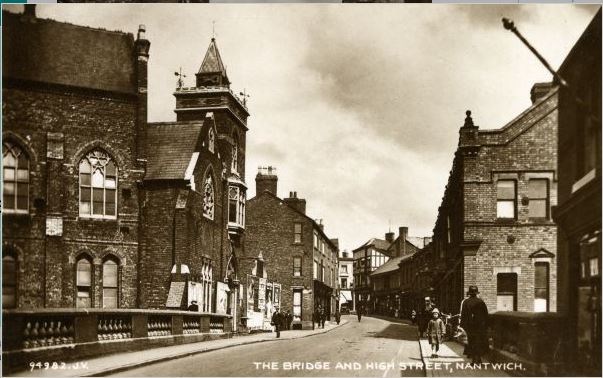
Part 4: Alternative routes
Nantwich bridge was still the only crossing of the Weaver at Nantwich. Another ancient crossing was at Beam Bridge on the road to Worleston and Reaseheath.
At the start of the 21st century, a new crossing of the Weaver was constructed called ‘Sir Thomas Fairfax Bridge’ (named after the leader of the parliamentary troops at the battle of Nantwich in 1644) for the Waterlode bypass which provided access to new housing developments and an alternative route avoiding Welsh Row.
Today the original Nantwich Bridge is still going strong with well over 200 years of service under its belt. As a Grade II listed structure it is likely to still be in use for many years to come.
